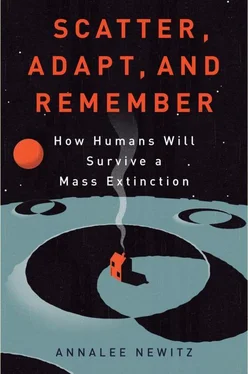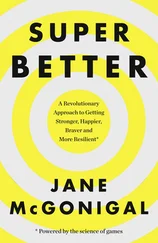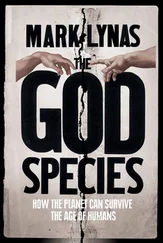Despite what we know about the Appalachian Mountains, the wholesale slaughter at the end of the Ordovician remains a mystery. We understand why rapid freezing and thawing would kill so many life-forms. But typical ice ages are millions of years in the making, and this one lasted for less than a million, making it ridiculously rapid in geological time. Could weathering alone have caused the rapid glaciation in the first place? Probably not. It’s possible that the ice formation was hastened by invisible rays from space.
Adrian Melott, a professor of physics and astronomy at the University of Kansas, has long been fascinated by a weird fact about mass extinctions. They seem to fall roughly every 63 million years. Trying to explain why this might be, he stumbled upon one possible explanation for the swiftness of the Ordovician ice age. It has to do with the motion of our star through the swirling galactic disk of the Milky Way.
Every star in the galaxy has an orbit around the edges of the galactic disk. As our sun makes its vast circuit around the Milky Way, it bobs up and down, floating above or below the galaxy’s flat plane about every 60 million years. When it does this, our solar system brushes the edge of the protective magnetic field that envelops the galaxy, deflecting dangerous cosmic rays zooming through deep space (on a smaller scale, the Earth’s magnetic field protects us from these same particles). Cosmic radiation could help explain why extinction events are more likely to happen every 63 million years or so.
Cosmic rays are highly energetic subatomic particles that have been bouncing around in deep space since the early days of the universe. They can shoot right through a living creature’s body, damaging its DNA and causing cancer. And these particles aren’t much kinder to the molecules that make up Earth’s atmosphere. Cosmic rays can damage the ozone layer, which leaves the planet more vulnerable to deadly radiation. Melott hypothesizes that cosmic-ray bombardment could also whip up a thick cloud layer in the atmosphere, lowering temperatures and helping the ice caps to form more quickly.
As the planet cooled, extinctions would have been worsened by radioactivity hitting the planet’s surface. “At this point we’re thinking that … the radiation dose for organisms on the surface of the earth, or in the top kilometer of ocean water, could be very large. This causes cancer and mutations.” Melott paused, as if imagining a planet with gray skies racked by cancers and catastrophic erosion. Then he chuckled. “Or, you know, it could lead to giant ants that rampage across the Earth.”
His joke about the 1950s atomic monster movie Them! , featuring giant ants that take up residence in the sewers of Los Angeles, underscores the degree to which he thinks of his work as speculative. Cosmic rays, he conceded, were only one part of the problem that animals faced at the end of the Ordovician. “The analogy I like to give is that it’s like you have the flu and then you get shot. Cosmic-ray stress is like the flu.” But other factors—the bullet in Melott’s analogy—need to be in play. And these would likely be the volcanic activity that led to the uplift of the Appalachians, the weathering that flattened them, and the resurgence of volcanoes that shut down the Ordovician ice age as quickly as it began.
The Ordovician ended with an extremely rapid version of what happened during the snowball phases of Earth’s history. A swiftly changing climate, vacillating between icehouse and greenhouse, made it impossible for most species to survive. Because those deadly climate shifts happened so fast, geologists have dubbed this horrific period the Ordovician mass extinction, marking the first time our planet witnessed the deaths of so many species at once.
The Devonian Period (415 Million–358 Million Years Ago): Invasive Species
By the time the planet’s temperatures had stabilized, the Ordovician biosphere was gone forever. A few survivors remained, like the hardy trilobites. But for the most part, new animals and plants evolved to rule the seas, and a few creatures even crept up on land. Life diversified and flourished for 100 million years, a fairly long time even for a geologist. Consider that modern humans evolved only about 200,000 years ago, and you have an idea how many species evolved and died out during the 100 million years before the planet suffered its next mass extinction. Our next rendezvous with mega death came during the Devonian period. This time there were no dramatic claws of ice, cosmic rays, or greenhouse extremes—but that’s because this was the first mass extinction caused by life itself. By the end of the Devonian, 50 percent of marine genera (groups of species) and an estimated 75 percent of species were dead. Oddly, these species died out at an ordinary rate, probably no higher than the typical background extinction levels. So why is this even considered a mass extinction at all? Because almost no new species evolved to take the extinct ones’ places for as many as 25 million years. It was mass extinction by attrition.
Scientists call this phenomenon a “depression in speciation,” meaning a low point in the evolution of new species. If you had been floating around for thousands of years in one of the Earth’s oceans during the late Devonian, about 374 million years ago, you wouldn’t see corpses piling up. Nor would you see vast stretches of lifeless water as you would have during the late Ordovician. Instead, you’d see the same species slowly spreading everywhere, darting around in enormous coral reefs that were ten times more expansive than the ones we have today. There weren’t fewer life-forms during this mass extinction. There were just fewer kinds of them.
How did invasive species destroy the planet? It all had to do with the period’s peculiar ocean ecosystems. The massive sea creatures of the Devonian earned the period its nickname, the Age of Fishes. The eminent geologist Donald Canfield conducted a study of the atmosphere during this period, after which he and his colleagues concluded that the Devonian oceans contained a high amount of oxygen, which allowed the period’s enormous animals to evolve. A group of hardy armored fish called placoderms vied with sharks to become the ocean’s most forbidding predators. Placoderms grew up to 36 feet long and had faces entirely covered in armor; they were also among the first creatures to develop jaws. (Sharks won the scary toothed predator contest in the end, though—placoderms went extinct.) Reefs made from algae and early sponges—all species lost to this extinction—were dramatically unlike the coral-dominated reefs we know today. The ocean floors crawled with ammonites, which looked something like octopuses with spiraled shells.
Watery habitats were everywhere—even on the continents. Enormous tropical inland seas dominated the landmass that later became North America. Most of the Midwest and the central United States were fully submerged, which is why paleontologists today find some of the best fossilized fish in the middle of the Midwest’s rolling prairies, which are about as far from the coast as you can get. Yet by the end of the Devonian, almost none of the gigantic armored fish and swarms of tentacled ammonites were left. What happened?
One paleontologist, Ohio University’s Alycia Stigall, has a theory that could explain why life during this period went from diverse to homogenous. She believes that invasive species took over the world’s oceans and inland seas, the same way cockroaches, kudzu, rats, and humans have spread across the globe today.
Stigall lives in Ohio, at the bottom of what was once a shallow Devonian sea. In fact, the vista from her windows is the former seafloor of an inland ocean hit particularly hard by the mass extinction. “We don’t have a good modern analogue for these types of oceans,” she said. They are a completely vanished ecosystem, though she imagines they might have been something like Hudson Bay. At the end of the Devonian, it’s likely that sea levels were high, pooling several inland oceans together. Earthquakes thrust new mountains from the land, which also brought previously separated ecosystems into contact with each other.
Читать дальше






![Аннали Ньюиц - Автономность [litres]](/books/424681/annali-nyuic-avtonomnost-litres-thumb.webp)





